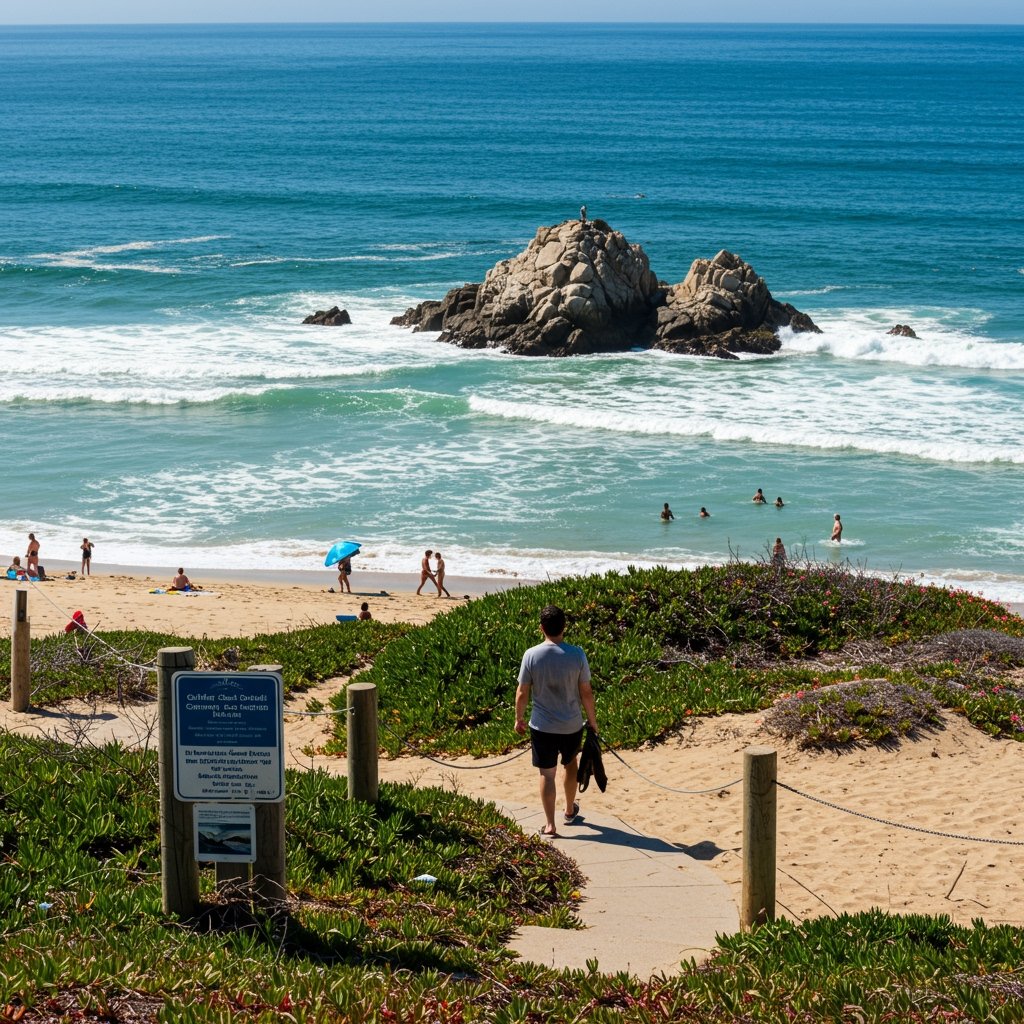SACRAMENTO, CA – In a significant move aimed at preserving California’s treasured coastline while managing burgeoning visitor numbers, the California Coastal Commission, in close partnership with California State Parks, has announced the implementation of a pilot permit system for access to select popular coastal areas. This new program, set to become effective on March 15, 2025, represents a proactive step to address the environmental impacts of overcrowding at some of the state’s most beloved natural destinations.
The decision comes after extensive observation and analysis of the strain placed upon fragile coastal ecosystems by high visitor volumes. Areas experiencing significant foot traffic and vehicle use have shown concerning signs of degradation, including exacerbated dune erosion, disruption of sensitive wildlife habitats, and overall damage to the delicate natural balance that makes these locations so special.
The Rationale: Protecting Fragile Coastal Ecosystems
The primary impetus behind the mandated permit system is the urgent need to protect the environmental integrity of critical coastal habitats. California’s coastline is renowned for its ecological diversity, supporting a unique array of plant and animal species, many of which are threatened or endangered. The popularity of these locations, while a testament to their beauty, has inadvertently led to human impacts that are detrimental to their long-term health.
Overcrowding can lead to trails widening through sensitive vegetation, unauthorized access to restricted areas, increased litter, and disturbance to wildlife breeding and feeding patterns. Dune erosion, in particular, is a major concern, as healthy dunes provide vital protection against coastal flooding and storm surges, in addition to serving as critical habitat.
The California Coastal Commission and State Parks emphasize that this initiative is not intended to restrict public access but rather to manage it sustainably. By implementing a structured access system, they aim to mitigate the negative environmental consequences of overuse while ensuring that visitors can continue to enjoy these areas in a manner that is less disruptive to the natural environment.
The Pilot Program: Key Locations and Mechanics
The pilot phase of the permit system will initially target specific areas that have been identified as particularly vulnerable to overuse impacts. These include portions of the stunning Garrapata State Park located near Big Sur, known for its dramatic cliffs and coastal trails; Torrey Pines State Reserve, a coastal wilderness area within San Diego city limits famous for its rare Torrey pine trees and lagoon; and areas within Point Reyes National Seashore, specifically focusing on limited vehicle access points that experience high congestion, such as parking lots providing access to popular trailheads or beaches.
Under the new system, visitors planning to access these designated areas will be required to obtain a permit in advance. These permits will be free of charge and available online through a dedicated portal.
A key feature of the program is the implementation of new daily caps on visitor numbers or vehicle entries, depending on the location and type of access being managed. These caps are scientifically determined based on the ecological carrying capacity of each specific site, aiming to reduce peak congestion and spread visitation more evenly throughout the day and season.
Permits will be date-specific, requiring visitors to select the precise day they intend to visit. They can be obtained up to 30 days ahead of time, allowing visitors to plan their trips in advance. The online system is designed to be user-friendly, providing information about availability and helping visitors choose less crowded times if their initial preference is unavailable due to caps.
How Visitors Can Obtain Permits
Starting on or before March 15, 2025, details and access to the online permit portal will be made available through the official websites of the California Coastal Commission, California State Parks, and potentially the National Park Service for Point Reyes. Visitors will need to visit the portal, select their desired location and date, and follow the prompts to secure their free permit.
It is anticipated that demand for permits, especially during peak seasons or holidays, may exceed availability at times. Visitors are strongly encouraged to plan their visits well in advance and secure their permits as early as the 30-day window allows.
Goals and Expected Impact
The overarching goals of this pilot permit system are two-fold: first, to preserve natural resources by reducing the physical impact of high visitor density on fragile ecosystems; and second, to enhance visitor experience by alleviating congestion, improving safety, and potentially offering a more serene and enjoyable encounter with nature. By limiting the number of people in these areas at any given time, the program aims to reduce trail crowding, ease parking difficulties, and minimize the potential for human-wildlife conflicts.
Officials believe that a managed access system will help protect vulnerable plant life, reduce the risk of wildfire ignition from overuse in unmanaged areas, and allow sensitive wildlife populations to thrive with less disturbance. For visitors, this could translate into easier parking, less crowded viewpoints, and a greater sense of tranquility in nature.
Evaluation and Future Outlook
The pilot permit program is slated to run throughout the entirety of 2025. During this period, the California Coastal Commission and State Parks will rigorously evaluate its effectiveness. Data will be collected on environmental health metrics (such as erosion rates and habitat recovery), visitor numbers, compliance rates, operational efficiency of the permit system, and feedback from the public and stakeholders.
The results of this comprehensive evaluation will be crucial in determining the future of the program. Based on its success in meeting the goals of resource preservation and enhancing visitor experience, there are plans for potential broader implementation of similar permit systems across other high-use state and national park coastal areas. Decisions regarding potential expansion are expected to be considered for late 2026.
This pilot represents a significant step in California’s ongoing efforts to balance the public’s desire to access and enjoy its world-renowned coastline with the critical need to protect its delicate and irreplaceable natural heritage for future generations.


















